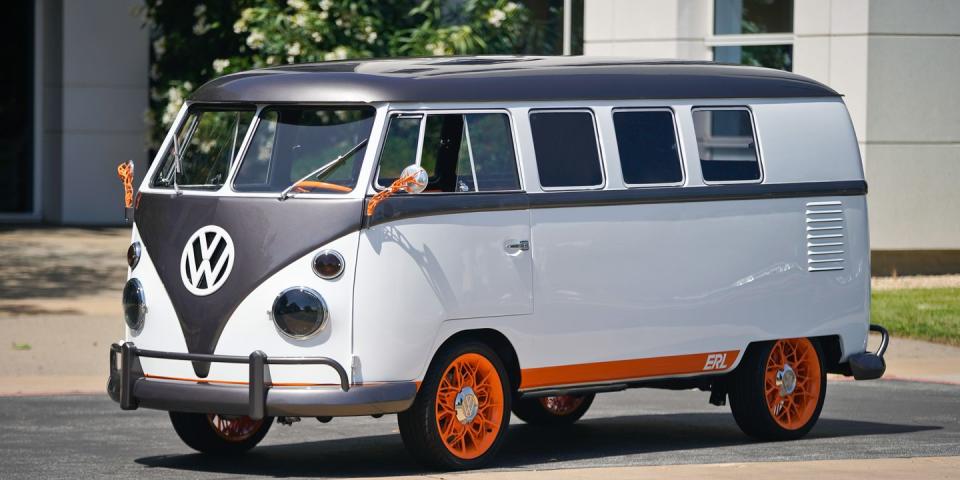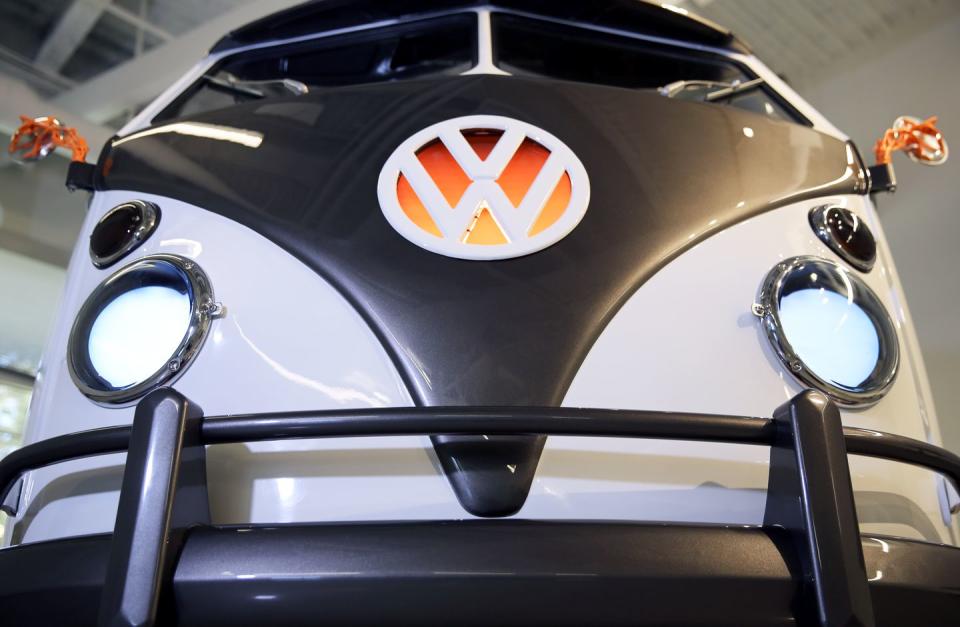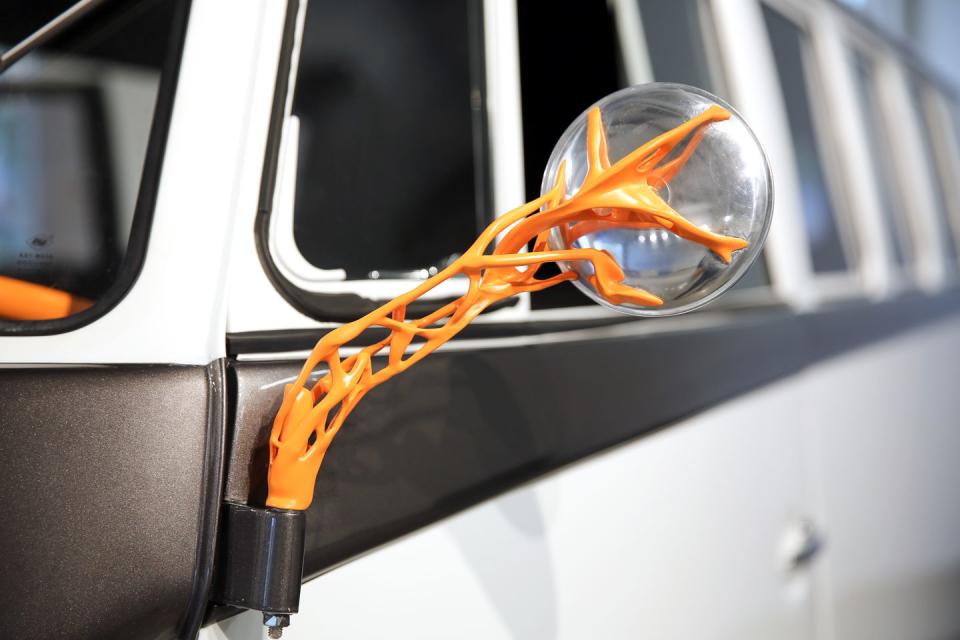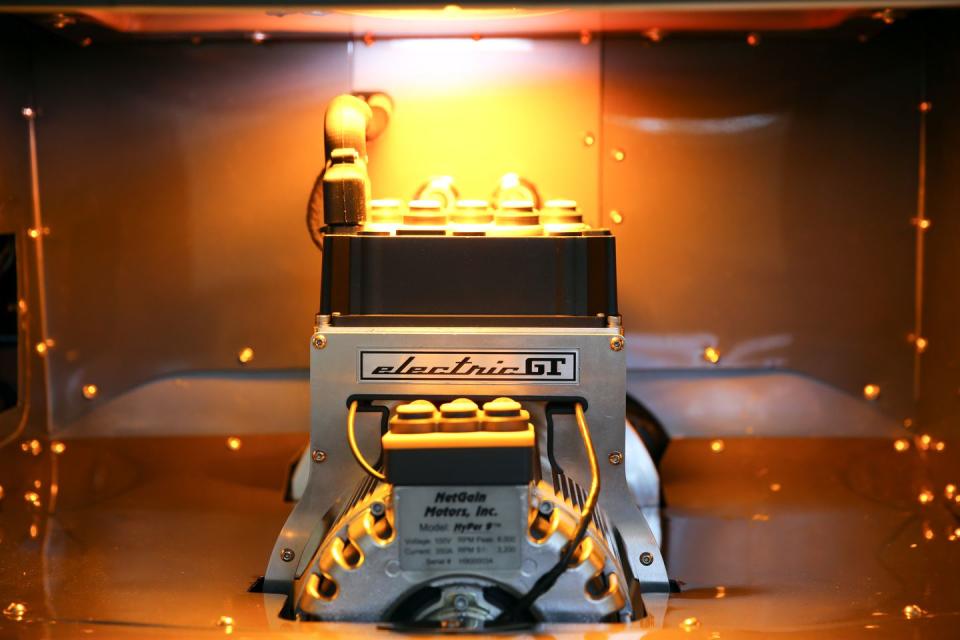Volkswagen Type 20 EV Microbus Concept Is the Hippie Classic, Reimagined as an Electric Vehicle

The Volkswagen Type 20 Microbus concept looks a whole lot like the classic 1962 Type 2 11-window bus on which it's based.
Featuring a fully electric drivetrain, the Type 20 concept utilizes a single electric motor rated at 120 horsepower and 173 lb-ft of torque.
It's the product of VW's newly renamed Innovation and Engineering Center California (IECC), which is now the maker's largest vehicle research facility outside Germany.
The almost poetic attraction of the Sixties-era Volkswagen Microbus is born again in this Type 20 Microbus concept, but it was actually made for a completely different, much more prosaic reason: to mark the new focus and direction of VW's engineering and research center in California. It will be a platform, not just for the EV drivetrain, but for various experimental purposes. This is not, of course, the first electric VW Bus-the I.D. Buzz concept from 2018 comes to mind-but it looks a lot more like the 1962 model than that futuristic-looking concept did.
The Innovation and Engineering Center comprises two entities, one for engineering and one for "innovation," and will focus on connected and autonomous driving projects along with R&D for Volkswagen Group brands. To mark the new focus and direction of the IECC, Volkswagen created the Type 20 Microbus–a vehicle that has been called variously Transporter, Kombi, Van, camper, or simply forward control–concept from the bones of a 1962 Type 2 11-window Microbus.

On this concept, a 10.0-kWh battery teams with a 2500-watt onboard charger to provide energy for the 120-hp, 173 lb-ft electric motor. If that sounds a little on the soft side in this era of inexpensive horsepower, remember that the air-cooled 1.6-liter flat-four that powered the original Type 2 was good for less than 50 horsepower when new.
Likewise, a custom-designed active pneumatic suspension developed with Porsche improves on the original's rudimentary setup and allows the Type 20 to rise as the driver approaches. Included software allows the vehicle’s ride height to be adjusted. VW used Autodesk "generative design" software which, in one of the most stereotypical California processes ever, "mimics natural evolution to create organic shapes." The software helped create the custom wheels, rearview-mirror supports, and interior support elements that maximize strength while minimizing weight.

High-tech features include 20 integrated directional microphones that interact with an advanced three-zone speech-recognition system to be more "natural" and provide LED feedback to exterior commands through the headlights and the front VW logo. There's also biometric identification with real-time facial recognition thanks to a wide-angle camera integrated into the driver's-side second window.

A holographic display is integrated into the Type 20’s dashboard to generate 3D images without the need for specialized glasses, which we're sure will disappoint fashion-forward tech heads everywhere.
The Microbus concept will go on display at the IECC in Silicon Valley as part of the facility's celebration of two decades in the high-tech mecca.
('You Might Also Like',)

 Yahoo Autos
Yahoo Autos 